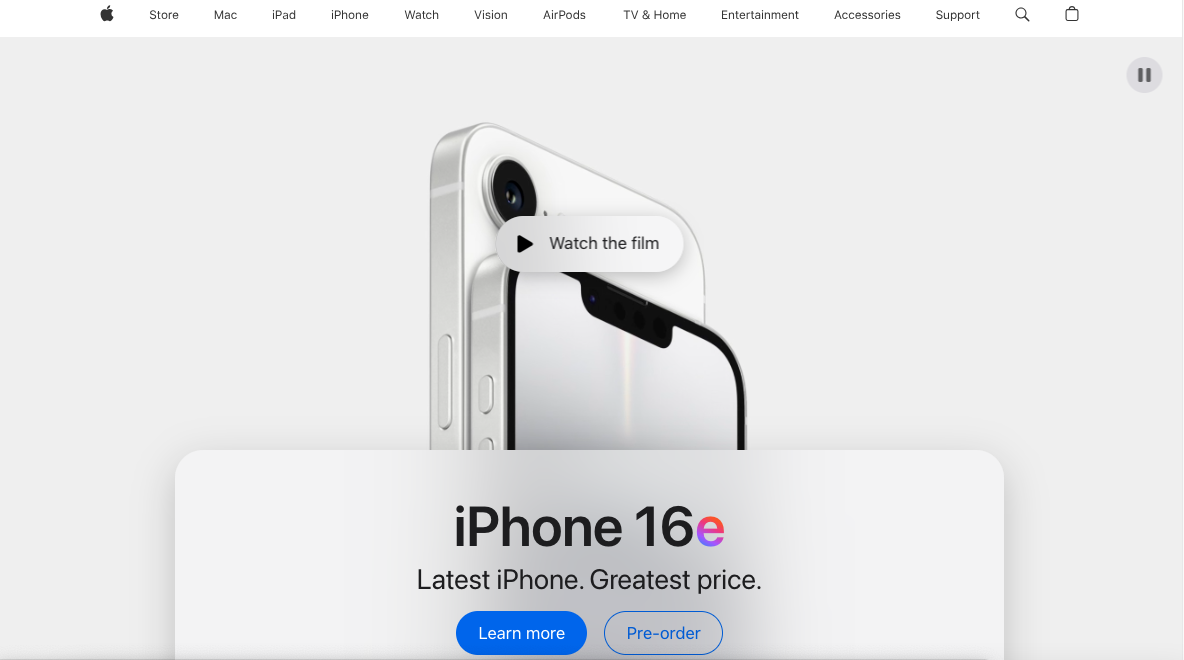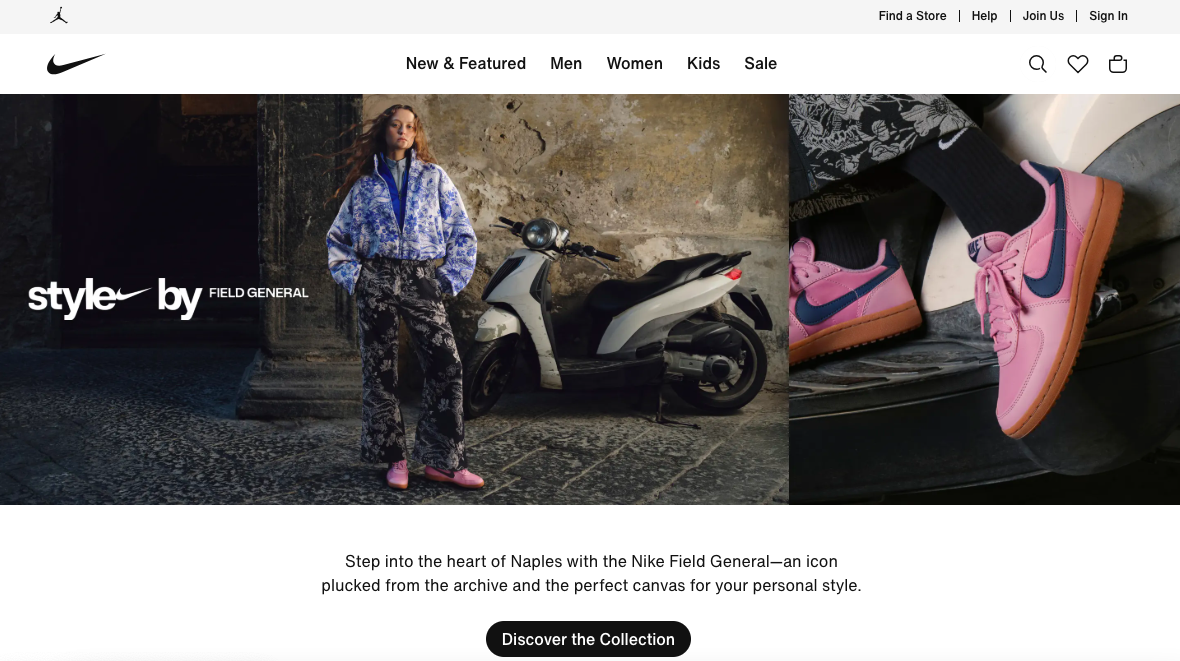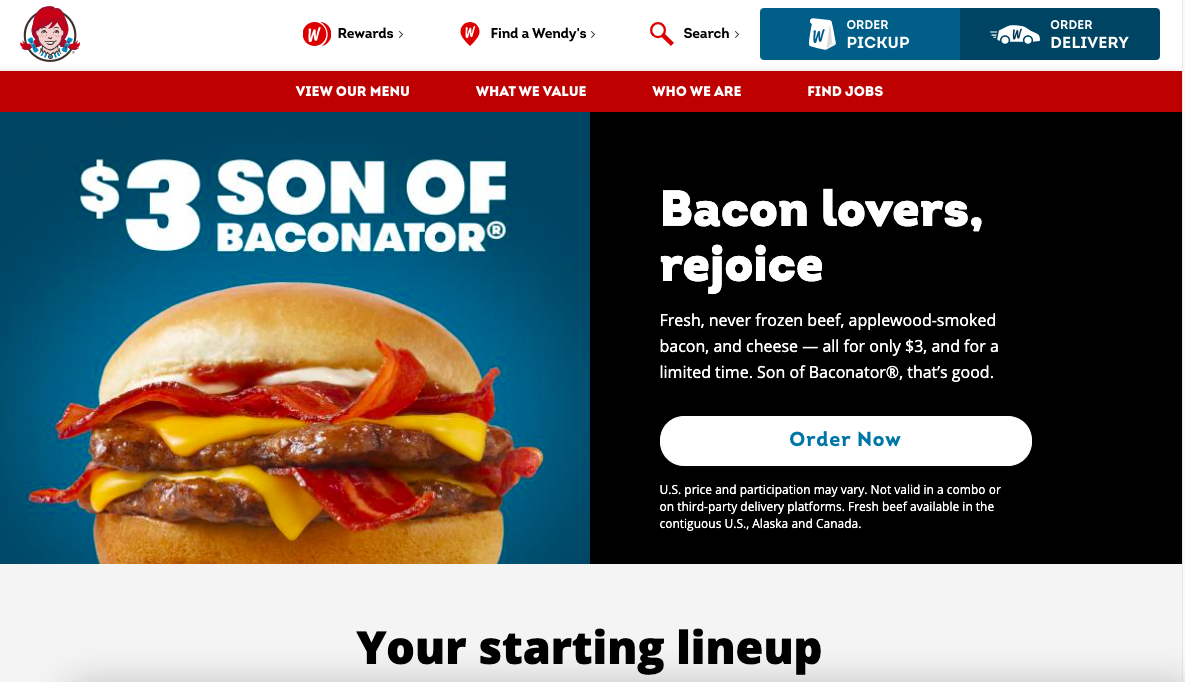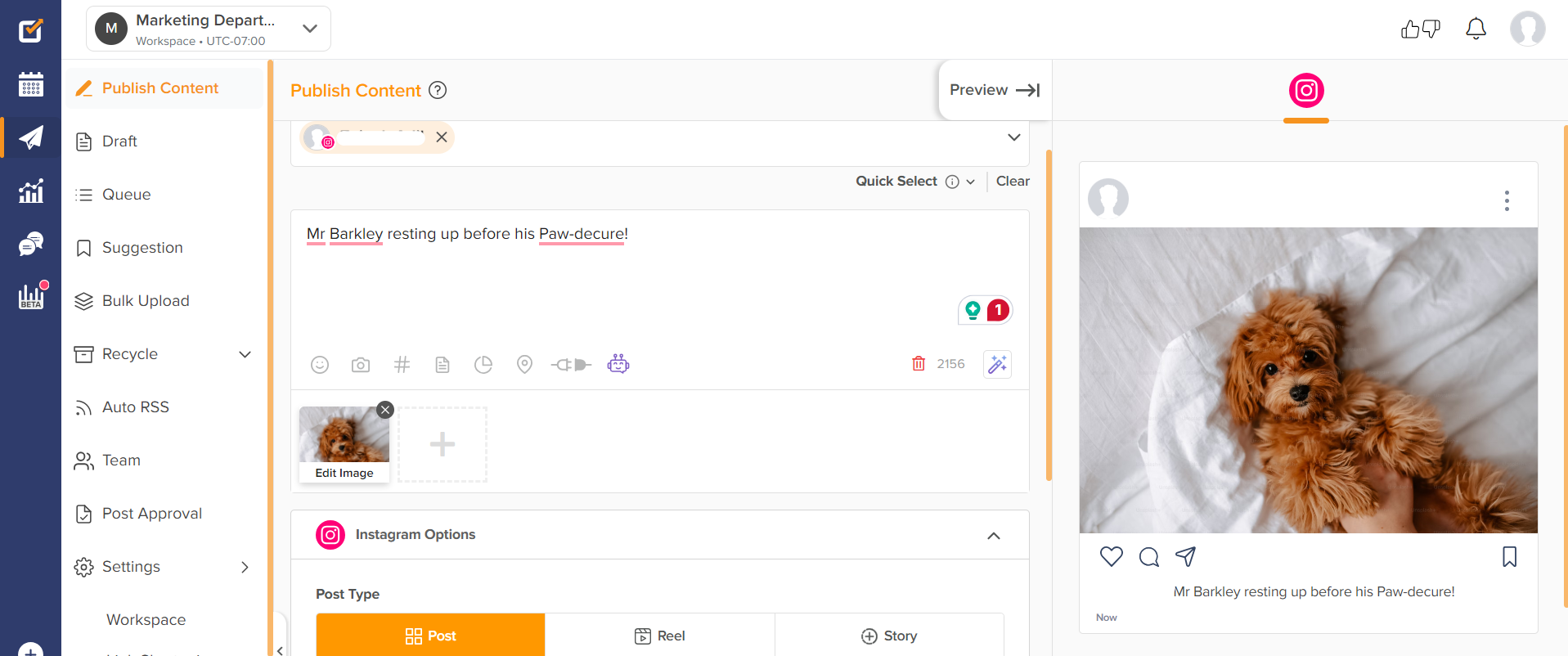Ever wondered why some brands instantly feel familiar and relatable while others seem all over the place?
That’s because of a well-defined brand voice.
Your brand’s voice is more than just a few words strung together—it’s your brand’s personality in action.
It shapes how people perceive and connect with you.
And in 2025, a strong brand identity matters, with 70% of marketers saying consistency is the most crucial factor in engaging and retaining existing customers.
However, managing a strong, consistent brand voice across multiple platforms isn’t easy, and that’s where a social media management tool like Social Champ comes in.
So, without further ado, let’s explore how you can craft a powerful and consistent voice of the brand that sets you apart!

Struggling to Keep Your Brand Voice Consistent?
Maintain a strong, unified brand identity with Social Champ’s AI-powered tools and seamless social media management.
Short Summary
- A well-defined tone of voice makes brands feel familiar and relatable.
- Inconsistent brand messaging can confuse audiences and weaken trust.
- A clear and strong voice of the brand builds credibility, identity, and customer loyalty.
- Defining this term involves identifying core values, understanding the audience, and analyzing competitors.
- Creating a voice of brand chart helps maintain consistency across platforms.
- Social media management tools like Social Champ assist in ensuring a unified brand tone of voice.
What Is Brand Voice and Why Does It Matter?
Think about your favorite brand.
Whether it’s Nike’s bold and motivational tone or Apple’s sleek and innovative messaging, their voice is instantly recognizable.
That’s because they have a well-defined brand voice—the unique tone, language, and personality they use across all communication.
Simply put, your voice is how your business “speaks” to customers.
It’s not just about what you say but how you say it.
A strong, consistent voice makes your brand feel authentic, trustworthy, and memorable.
Why Does It Matter?
In today’s crowded market, consumers interact with hundreds of brands daily.
You’ll quickly fade into the background if your messaging sounds inconsistent or generic.
Here’s why defining your voice is crucial:
- Builds Trust and Credibility – Studies show that 81% of consumers prefer brands that sound authentic and relatable.
- Creates a Strong Brand Identity – A well-crafted voice makes your brand instantly recognizable, just like Coca-Cola’s friendly tone or Disney’s magical storytelling.
- Differentiates You from Competitors – In a sea of similar products, a distinct voice helps you stand out.
- Boosts Customer Loyalty – Existing customers contribute to 65% of total sales, making them a vital part of a brand’s revenue stream.
Featured Article: Understanding Gen Z Consumer Behavior: Insights for 2025
What Happens If You Don’t Define Your Brand Voice?
Without a clear brand voice, your messaging will feel all over the place.
One day, your brand will sound professional and corporate.
The next, it’s casual and playful.
This confuses your audience and weakens their trust in your brand.
If customers can’t recognize or relate to your voice, they’re less likely to engage, remember, or stay loyal to you.
A brand without a consistent voice is like a person who keeps changing personalities—it becomes hard to connect with them.
That’s why defining and maintaining your brand voice is essential to long-term success.
How to Define Your Brand Tone of Voice?
Creating a strong brand voice isn’t just about choosing a few adjectives and calling it a day.
It’s about strategy, consistency, and connection.
Your brand’s personality should be clear, authentic, and aligned with your values and audience.
Let’s break it down step by step.
-
Identify Your Brand’s Core Values
Your brand’s tone of voice should reflect your mission and beliefs.
It’s what sets you apart from competitors and makes your messaging feel authentic.
Ask yourself:
What are the core values of my brand?
How do I want customers to feel when they interact with my brand?
What emotions should my messaging evoke—trust, excitement, warmth, authority?
For example:
A tech brand like Apple, known for simplicity and innovation, uses a clean, confident, and minimalistic voice.
A fitness brand like Nike, built on motivation and discipline, adopts a bold, energetic, and empowering tone.
Your voice should always match your values and industry to ensure credibility.
-
Understand Your Target Audience
Your voice of the brand should feel relatable to the people you’re trying to reach.
The best way to do this?
Speak their language.
Think about:
Who is your ideal customer?
How do they communicate—formal, casual, humorous, or professional?
What tone would make them feel comfortable engaging with your brand?
For instance:
If your audience is young, trendy, and social media-savvy, a casual, fun, and playful tone works best.
If your audience is business professionals, a clear, authoritative, and informative tone is more effective.
Pro tip: Read customer reviews, social media comments, and industry forums to understand how your audience communicates.
Then, mirror their language in your messaging.
-
Analyze Your Competitors’ Brand Tone of Voice
Understanding what works (and what doesn’t) in your industry can help you carve out your own unique voice.
Look at your competitors and ask:
Are they using humor, or do they keep it formal?
Do they sound approachable or authoritative?
What’s resonating with their audience?
Where can you differentiate yourself?
The goal isn’t to copy them but to stand out.
If all your competitors have a serious and corporate tone, maybe a friendly and engaging approach will make your brand more memorable.
-
Create a Brand Tone of Voice Chart
A voice of brand chart helps keep your messaging clear, consistent, and aligned across all platforms.
It sets guidelines for how your brand should and shouldn’t communicate.
Brand Trait Do Say… Don’t Say… Friendly “Hey there! How can we help?” “Dear valued customer, we regret to inform you…” Bold “Take action now!” “You might want to think about this…” Informative “Here’s what you need to know” “You probably don’t care, but…” This simple guide ensures that everyone on your team stays on the same page and maintains a consistent voice across all content.
-
Ensure Consistency Across All Channels
Your brand tone of voice should sound the same everywhere—whether it’s on social media, your website, emails, or customer support.
Inconsistent messaging can make your brand feel disorganized and unreliable.
Customers should instantly recognize your tone, no matter where they engage with you.
Pro tip: Use AI-powered tools like Social Champ to ensure brand consistency across all your social media platforms.
These tools help you maintain your unique voice, schedule content effortlessly, and keep your messaging aligned with your brand’s identity.
By following these steps, you’ll create a brand voice that feels authentic, powerful, and memorable—one that customers can connect with and trust.
Featured Article: Product Launch on Social Media: A Step-By-Step Guide to Success in 2025
Top 10 Actionable Tips to Develop a Strong Brand Voice
Want to refine your voice of brand and make a lasting impression?
Here are 10 easy, actionable tips to help you create a voice that truly represents your brand.
-
Be Authentic – Keep It Real!
People can sense when a brand is trying too hard or faking its personality. Your voice should feel natural, honest, and true to your values.
Example: If your brand is fun and playful, don’t suddenly become overly serious just to sound professional. Stick to your personality!
Why It Matters?
Authenticity builds trust and loyalty—customers are more likely to engage with brands that feel genuine and relatable. -
Keep It Simple – Ditch the Corporate Jargon
Nobody likes reading long, complicated sentences filled with buzzwords and technical jargon. Speak like a real person.
Example: Instead of saying, “Our innovative solutions drive unparalleled synergies in the digital landscape,” just say, “We help you grow online, faster and easier.”
Why It Matters?
Simple language connects faster, is easier to remember, and makes your brand feel approachable. -
Use Storytelling – Make Your Brand Memorable
People remember stories, not sales pitches. Sharing real-life experiences and relatable examples helps humanize your brand.
Example: Instead of just saying, “Our skincare products work,” tell a customer’s success story:
“Sarah struggled with dry skin for years—until she found our hydrating serum. Now, her skin is glowing!”Why It Matters?
Stories create emotional connections and make your brand stand out from competitors. -
Adapt to Platforms – Adjust Without Losing Your Brand’s Personality
Each social media platform has its own vibe and audience. Your tone should fit the platform while staying true to your voice.
Example:
Instagram and TikTok: Fun, playful, and engaging
LinkedIn: Professional, informative, and insightful
Twitter/X: Witty, concise, and trending
Why It Matters?
A flexible yet consistent voice makes your brand feel natural across all channels, increasing engagement. -
Engage With Your Audience – Conversations Build Trust
Your voice isn’t just about what you post—it’s also how you respond.
Whether it’s comments, DMs, or emails, reply in a way that aligns with your tone.
Example:
If your brand is funny, respond with humor.
If it’s professional, keep replies polite and helpful.
If it’s inspirational, use motivational words.
Why It Matters?
A brand that actively engages feels more human and approachable, encouraging customer loyalty. -
Train Your Team – Everyone Should Speak the Same Language
Your brand voice should be consistent across all departments—from marketing to customer support.
If your team isn’t aligned, your messaging will feel all over the place.
How to Fix It?
Create a brand voice guide with tone, phrases, and do’s and don’ts.
Hold training sessions for employees.
Use AI tools to check content consistency.
Why It Matters?
A unified voice builds brand recognition and ensures customers get the same experience everywhere. -
Use Visuals That Match Your Voice
Your words and visuals should complement each other.
A bold, energetic voice needs strong, vibrant colors, while a calm, professional voice should have sleek, minimal designs.
Example:
A luxury brand → sleek fonts, muted colors, sophisticated imagery
A youth-focused brand → bright colors, fun animations, bold typography
Why It Matters?
First impressions matter!Matching visuals with voice creates a stronger brand identity.
-
Evolve Over Time – Stay Relevant
Trends, audiences, and industries change over time, and so should your voice.
While consistency is key, it’s also important to adapt and stay fresh.
What to Do?
Review your voice of brand every year.
See what’s working (and what’s not).
Adjust tone, wording, or messaging based on customer feedback.
Why It Matters?
A stale, outdated voice makes your brand lose relevance.Evolution keeps you engaging and relatable.
-
Be Culturally Aware – Avoid Tone-Deaf Mistakes
Your brand voice should be inclusive, respectful, and culturally aware.
What works in one country or demographic might offend another.
Example:
Avoid using slang that may not translate well globally.
Stay informed on cultural sensitivities.
Review campaigns with diverse teams to spot potential misinterpretations.
Why It Matters?
One wrong word can cause backlash and PR nightmares.A culturally aware brand builds trust and respect worldwide.
-
Measure and Adjust – Data Doesn’t Lie!
How do you know if your voice of the brand is working?
Track engagement, audience sentiment, and customer feedback.
How to Measure?
Monitor comments and reviews—are people responding positively?
Use social media analytics—do your posts get more shares, likes, and interactions?
Conduct customer surveys—does your messaging resonate with them?
Why It Matters?
Data-driven adjustments help you refine your voice and ensure it stays effective and engaging.
Examples of Strong Voices of Brands
So, what’s your brand tone of voice?
If you haven’t defined it yet, now’s the perfect time to start!
Here are four brands that have mastered their voice and built a strong identity through it.
-
Apple – Minimalistic and Innovative

Apple’s Web Page Apple keeps everything sleek, simple, and straight to the point—just like their products. Their messaging is always crisp and clean, with no unnecessary fluff.
Example:
Instead of saying, “Our latest iPhone has advanced technological features that will enhance your mobile experience,”Apple simply says:
“iPhone 15. Light. Powerful. Magical.”Why It Works?
Apple’s brand tone reflects its core values—innovation, simplicity, and elegance.
They make technology feel effortless rather than complicated.
-
Nike – Motivational and Bold

Nike’s Landing Page Nike is all about empowerment, action, and breaking limits.
Their tone is strong, inspiring, and direct, pushing you to be your best self.
Example:
Instead of long explanations, Nike’s brand tone is power-packed with short, impactful phrases:
“Just Do It.”
“You Can’t Stop Us.”Why It Works?
Nike’s messaging ignites motivation in its audience, making them feel like they can achieve anything—whether they’re athletes or just starting their fitness journey.
-
Wendy’s – Playful and Witty

Wendy’s Main Page Wendy’s Twitter account is famous for its humor, sarcasm, and playful jabs at competitors.
They don’t just sell burgers—they entertain their audience!
Example:
A Twitter user once asked Wendy’s: “What should I get at McDonald’s?”
Wendy’s reply? “A ride back to Wendy’s.”Why It Works?
Wendy’s stands out in a crowded fast-food market by making their brand feel fun, fresh, and relatable—especially to younger audiences.
-
Social Champ – Authentic and Engaging

Social Champ’s Dashboard Social Champ makes social media management feel easy, engaging, and fun.
Their brand tone is friendly, conversational, and helpful, making users feel supported.
Example:
Instead of using dry, technical language, Social Champ keeps it light and approachable:“Stop stressing over social media posts—schedule, automate, and relax with Social Champ!”
Why It Works?
Social Champ’s voice aligns with busy marketers and business owners, making social media management feel effortless instead of overwhelming.

Ready to build a strong brand tone that stands out?
Use Social Champ to create, schedule, and maintain a consistent tone across all social media platforms!
How to Maintain a Consistent Brand Tone?
Once you’ve developed your brand tone, you need to keep it consistent across all platforms.
Here’s how:
- Develop Brand Tone Guidelines – Create a document that outlines your tone, language, and dos and don’ts to ensure consistency.
- Train Your Team and Content Creators – Everyone who communicates on behalf of your brand should understand and use the same voice.
- Use AI-Powered Tools – AI can help analyze your content and check if your brand tone is consistent across different platforms.
Common Mistakes to Avoid in Brand Voice Development
Even the best brands can mess up their voice if they’re not careful.
Here are three common mistakes to avoid:
Being Inconsistent Across Platforms – If you’re serious on LinkedIn but overly casual on Instagram, your audience may get confused about who you really are.
Copying Competitors Instead of Being Authentic – Customers connect with originality. Trying to sound like another brand makes you forgettable.
Ignoring Customer Feedback – If your audience finds your tone too aggressive, too boring, or too robotic, listen to them and adjust accordingly.

Struggling to Keep Your Messaging Consistent?
Let Social Champ help you streamline your content and engage your audience effortlessly!
Conclusion
Developing a strong brand tone isn’t just about choosing words—it’s about creating a unique personality that people recognize and trust.
Whether you’re playful like Wendy’s, motivational like Nike, or sleek like Apple, your brand tone should feel authentic, consistent, and engaging.












